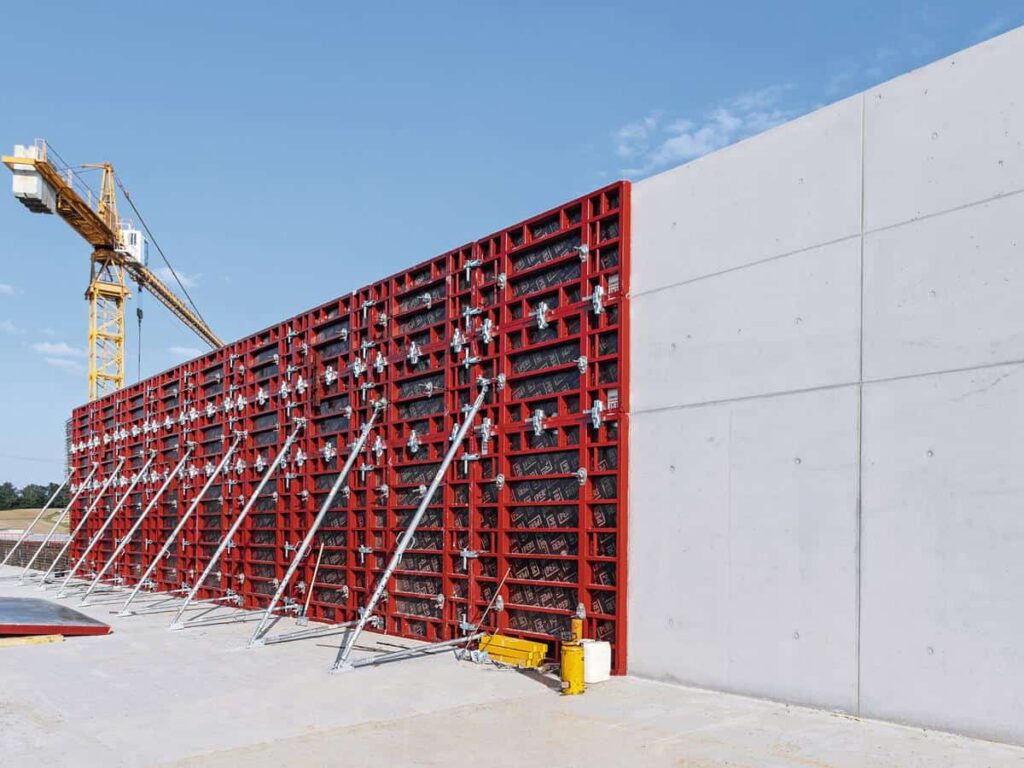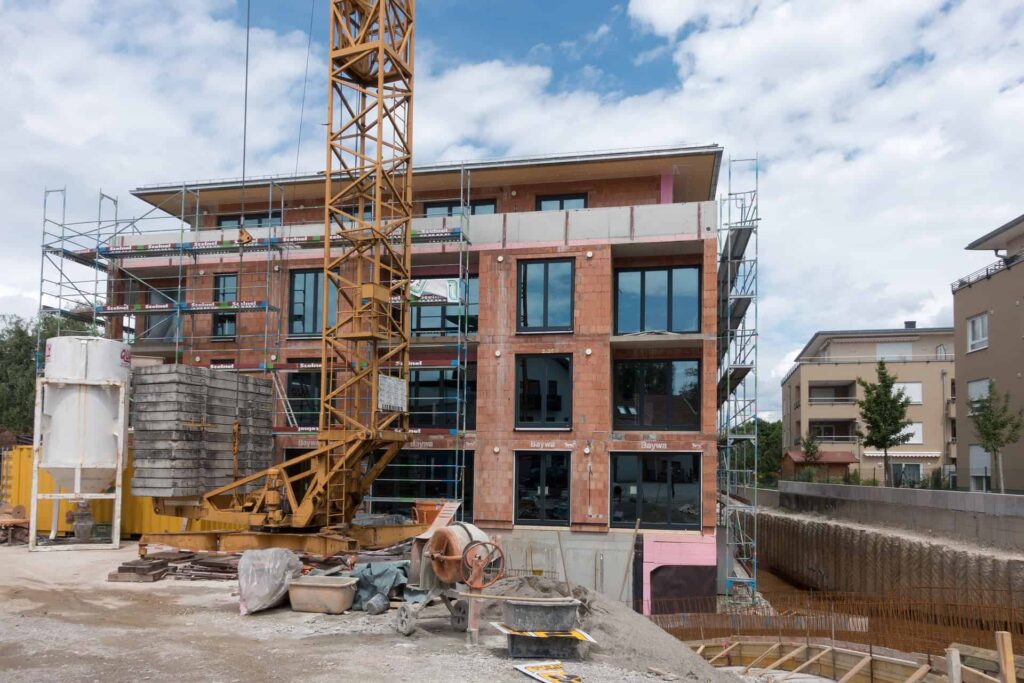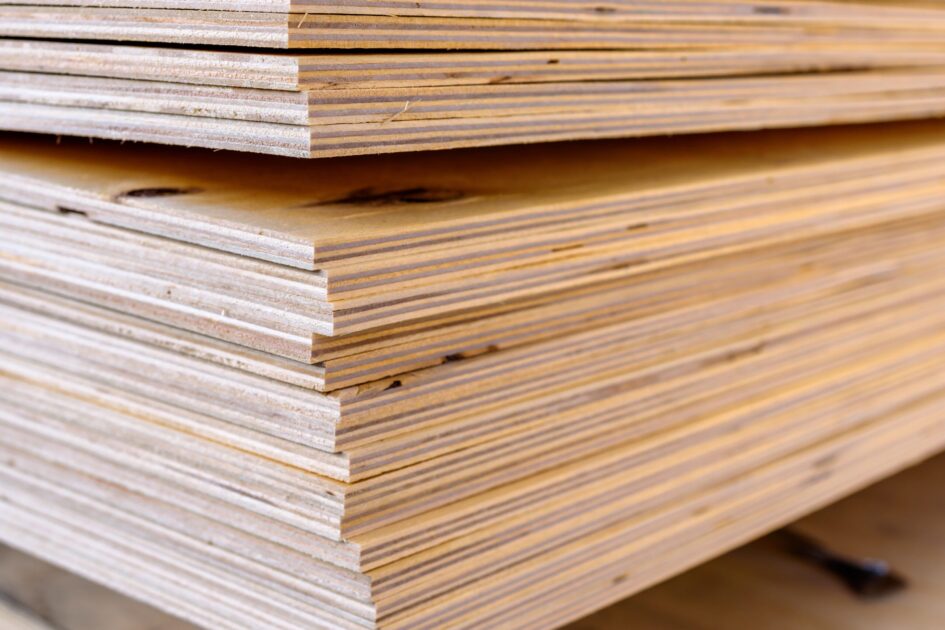Concrete form plywood plays a crucial role in construction projects, providing a sturdy and reliable foundation for concrete pouring and curing. However, with so many options available on the market, selecting the best concrete form plywood can be a daunting task. In this article, we will guide you through the process of choosing the right concrete form plywood for your project, taking into consideration factors such as durability, moisture resistance, plywood thickness, and surface smoothness.
Understanding the Basics of Concrete Form Plywood
Before we delve into the details of selecting the best concrete form plywood, let’s first understand what exactly it is. Concrete form plywood, also known as sheathing plywood, is specifically designed for use in concrete forms. It is made from multiple layers of thin veneer sheets that are bonded together with strong adhesives. This structural plywood is engineered to withstand the pressure exerted by wet concrete during pouring and curing processes.
Another crucial factor to consider when selecting concrete form plywood is the surface finish. A smooth surface finish is essential for achieving a high-quality concrete appearance, as rough plywood surfaces can leave impressions on the concrete. Some plywood panels come with a film coating to improve surface smoothness and release properties, making them ideal for achieving a flawless concrete finish.
Concrete form plywood plays a crucial role in construction projects, providing the necessary support and shape for concrete structures. It acts as a temporary mold that helps in creating smooth and uniform surfaces for various applications, ranging from walls and columns to beams and slabs.
What is Concrete Form Plywood?
Concrete form plywood is a specialized type of plywood that serves as a temporary mold for concrete structures. It provides support and stability to the concrete until it hardens and gains strength. Once the concrete has cured, the plywood can be removed, leaving a smooth and solid surface.
When selecting concrete form plywood, it is essential to consider factors such as the type of formwork being used, the expected concrete pressure, and the desired finish of the concrete surface. These considerations will help determine the appropriate thickness and grade of plywood required for the project.

Key Features of Concrete Form Plywood
Concrete form plywood comes with several key features that make it well-suited for construction projects. These include:
- High strength and durability to withstand the pressure exerted by wet concrete.
- Moisture resistance to prevent warping or delamination when exposed to water or humidity.
- Various thickness options to accommodate different project requirements.
- Smooth surface finish that allows for easy formwork removal.
Additionally, concrete form plywood is often manufactured with special coatings or treatments to enhance its performance and longevity on the job site. These protective measures can include water-resistant overlays, edge seals to prevent moisture ingress, and anti-slip textures for improved safety during installation.
Read about f14 plywood on: The Importance of F14 Plywood in Structural Formwork Applications
Factors to Consider When Choosing Concrete Form Plywood
Choosing the right concrete form plywood involves considering various factors that will impact the overall performance and longevity of your project. Here are some key factors to keep in mind:
Durability and Strength
One of the most important considerations when selecting concrete form plywood is its durability and strength. You want plywood that can withstand the pressure exerted by the wet concrete without bowing or breaking. Look for plywood that has been specifically designed for use in concrete forms and has a high load-bearing capacity.
When it comes to durability, it’s also worth considering the type of wood used in the plywood. Different wood species have varying levels of strength and resistance to moisture and decay. For example, Douglas Fir plywood is known for its high strength and resistance to warping, making it a popular choice for concrete formwork. Read more about resistance on http://230nsc1.phy-astr.gsu.edu/hbase/electric/resis.html
Moisture Resistance
Moisture resistance is another crucial factor to consider, especially if your construction project involves exposure to water or high humidity. Moisture can cause plywood to swell, warp, or delaminate, compromising its structural integrity. Choose plywood that has been treated or coated to enhance its moisture resistance.
One option to enhance moisture resistance is to select plywood that has been treated with a water-resistant coating, such as phenolic resin. This coating helps to seal the plywood and protect it from moisture absorption, ensuring its longevity in wet conditions.
Plywood Thickness
The thickness of concrete form plywood is determined by the amount of pressure the concrete will exert during pouring and curing. Thicker plywood can withstand higher pressures, while thinner plywood is suitable for lower pressure applications. Consider the specific requirements of your project and choose the appropriate plywood thickness accordingly.
It’s important to note that thicker plywood may also offer better insulation properties, which can be advantageous in certain construction scenarios. Thicker plywood can help regulate temperature and reduce energy loss, providing additional benefits beyond its structural capabilities.
Surface Smoothness
A smooth surface finish is essential for easy formwork removal and achieving a high-quality concrete surface. Rough or uneven plywood surfaces can cause the concrete to adhere to the form, making it difficult to strip. Look for plywood with a smooth surface that minimizes the risk of concrete sticking.
In addition to surface smoothness, consider the quality of the plywood’s edges. Plywood with smooth, straight edges will ensure tight joints and minimize the risk of concrete leakage during pouring. This attention to detail can contribute to a more efficient and successful concrete formwork process.
Different Types of Concrete Form Plywood
When it comes to concrete formwork, choosing the right type of plywood is crucial for ensuring the success and durability of your project. There are several types of concrete form plywood available, each with its own unique characteristics and benefits. Let’s delve deeper into some common types:
Medium-Density Overlay (MDO) Plywood
Medium-Density Overlay (MDO) plywood stands out as a popular choice for concrete formwork due to its exceptional strength and durability. Featuring a smooth phenolic overlay on both sides, MDO plywood offers not only superior surface quality but also impressive moisture resistance. One of its key advantages is its dimensional stability, which means it is less prone to warping or swelling, ensuring a reliable formwork solution for various construction projects. To find more about moisture click here.
High-Density Overlay (HDO) Plywood
High-Density Overlay (HDO) plywood shares similarities with MDO plywood but boasts a denser resin overlay, providing even greater durability and moisture resistance. This makes it an ideal option for projects that demand frequent concrete form reuse, as HDO plywood can withstand multiple uses without compromising its structural integrity. Additionally, HDO plywood offers exceptional surface smoothness, facilitating easy formwork removal and contributing to a more efficient construction process.
Structural 1 Plywood
For those seeking a cost-effective yet reliable solution for concrete form applications, Structural 1 plywood emerges as a budget-friendly option. Despite being manufactured with a single layer of veneer, Structural 1 plywood offers sufficient strength and durability to support concrete formwork effectively. Its lighter weight, compared to other plywood types, makes it easier to handle on construction sites without sacrificing performance.

The Role of Concrete Form Plywood in Construction Projects
Concrete form plywood plays a crucial role in the construction process, impacting the structural integrity and overall quality of the final concrete structure. Its main functions include:
Formwork Design
Concrete form plywood serves as the mold for shaping the concrete into the desired structure. Proper formwork design, utilizing the right type and thickness of plywood, ensures the stability and integrity of the form during concrete pouring.
Concrete Pouring and Curing
During the concrete pouring and curing process, the plywood provides support and containment for the concrete. It helps to prevent excessive deformation, cracking, and leakage, ensuring that the concrete cures uniformly and achieves its desired strength.
Concrete form plywood comes in various grades, with each grade offering different levels of durability and performance. Higher grade plywood, such as B-B or A-A, is typically used for projects requiring multiple uses, offering better resistance to wear and moisture. Lower grade plywood, like CDX, is more budget-friendly but may not withstand repeated use or exposure to moisture as well.

Leave a Reply